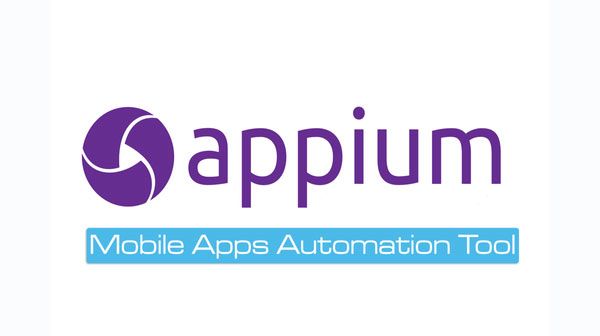Technologies for Mobile Test Automation: At present, the number of smartphone users is more than six billion and is expected to grow by several hundred million over the coming years. China, India, and the United States have the largest amount in smartphone owners.
Mobile apps must perform well and compatible with different market-available devices to meet increasing expectations of customers. App testing is the most effective solution to achieve these goals. This requires a test procedure that is not just efficient but also gives a better coverage in order to meet the standards efficiently. Businesses therefore make no sacrifices to ensure cross-platform compatibility.
If it’s about the mobile test, Appium is the industry most popular option. Appium helps with the advancement of automation. We’ll discuss that in this article.
What is Appium
Appium is an open source automated tool for testing to test mobile applications. It can be used to test and evaluate applications. Sauce Labs is designed and is supported to automate native and hybrid mobile apps. It’s an automation tool for mobile that runs across platforms which allows the same test to run across multiple platforms. Appium allows simultaneous testing of multiple devices.
The demand for mobile applications is rising in the world of development. Today, people transform their websites into mobile apps. This is why it is crucial to understand mobile software automation testing technology and keep up-to-date with current technological advancements in this field.
Mobile testing with Appium is possible to run on smartphones, simulators or emulators. Simulators are representations of the current state and performance for an application. The same is true for emulators. hardware or software that allows one computer (the host) to run software designed for a different computer system (guest).
The operating system of a mobile device (OS) is not relevant to the mobile automation of Appium. Because of its framework’s capability to convert the driver’s commands in OS-dependent Android and iOS commands This is the situation. These instructions are in fact dependent on the kind the mobile.
Below are some of the most commonly used types of mobile apps that are able to be tested with Appium automation testing
Native Applications: These applications are created using iOS, Android, or Windows SDKs. They can only be accessed once they have been downloaded on your device. For example, Skype is only usable once it has been installed of the application on your device. It is not possible to access the app through the browser.
web applicationsMobile applications on the web may only be accessed via an mobile browser. Web-based apps can only be accessible through an internet browser. For instance, softwaretestinghelp.com can only be viewed using a web browser. We don’t offer an application for our site.
Hybrid applications: These applications feature the wrapper of reviews, as well as an in-built control that allows interaction with web-based content. They can be installed on the device and are accessible via browser URLs. Amazon For instance, Amazon is available as a separate application on an operating system and accessible via the same browser as Amazon.
What is the reason Appium well-known?
App developers who develop mobile apps extensively use Appium due to its distinctive features and advantages. The most important reasons for developers to prefer Appium over other automated mobile testing technologies are as follows:
- The use of the common API on all platforms
Modifying your code is not something you want to do. Particularly if it’s necessary because of your system’s test tools. Appium is an excellent option because it works with its API standard and is adaptable to work according to your preferences.
- The versatility of the cross-platform exam
Imagine the kind of coverage that needs to be considered when testing the mobile app which users could be able to use across the globe if there were differences in the mobile operating system between five people sitting in the same place.
Testing across multiple platforms is essential to all testers of software. In the case of mobile automation, it’s an absolute lifesaver to have a single tool to perform this job. Appium is able to examine iOS and Android applications . It can install for Windows, Mac, and Linux.
- Flexibility to use this test framework
Following the introduction of Appium to it’s market process where tests were developed using Javascript for iOS with an application called UI Automation of the Apple library, or in Java to Android with the UI Automation from Google was drastically altered. With Appium you’re able to use any framework you want to your application.
- Supports multiple languages
Appium is compatible with a wide range of programming languages, which gives you an the advantage over other testing tools.
- Advanced function
Appium has advanced capabilities like interactions and interaction with CI software and the ability to execute across multiple devices. As the development of the testing framework progresses, CI tools and multi-device execution become vital. Appium is able to integrate with the other.
- Very low memory usage
Appium’s design is an intermediary for the automated toolkit as well as the testing machine.
Developers and testers also choose Appium because of these additional benefits:
- It allows the simultaneous running of tests scripts.
- It also includes a tool to record test scenarios and the ability to replay these recordings.
- Multiple components are able to be evaluated simultaneously (i.e. emulators, actual devices as well as simulators).
- It lets you test in the cloud with testdroid.
- It is backed by a lively group of people (Google group) which makes troubleshooting easily and speedier.
What is the process behind Appium function?
Appium uses its design’s three primary components (client server, client and the end device). When the application installs on PC it creates an HTTP server which generates REST APIs to enhance communication between the client and.
It is the JSON Wire Protocol communicates between the server and the client. It allows for the transmission of command request. The command requests are executed on the end device (either using Android, Windows, or iOS).
Appium on Android Device
To make it easier to test applications for testing on Android phones, Appium uses the UIAutomator framework (or Selendroid), which is specifically designed to test and testing the Android users’ interface. Bootstrap.jar is a bootstrap.jar file is an TCP server that can send tests command messages to an Android device through an application called the UI Automator or Selendroid framework.
Appium on an iOS device
Appium uses it’s JSON wire protocol on iOS devices, just as it does for Android devices. Apple’s UIAutomation API interfaces with the components that interface users in testing that is automated for iOS test of devices. The bootstrap.js code acts as an TCP server, which transmits tests commands to an iOS device through the UIAutomation API framework developed by Apple.
Advanced Mobile Automation Testing using Appium
- Using API
Appium makes use of the WebDriver agent to perform mobile testing. It’s the most efficient Appium automation technique currently available. It’s the WebDriver agent is included in the app as an action and is installed on the simulator or on an actual device. There are a variety of events that occur as the Appium script is running using a tried and tested application. This is because the “log timestamp” feature measures the amount of time required to finish this job. Certain processes take a significant amount of time to finish.
On the test systems A and A1, it will take about 2 seconds to get the system started while for test systems B it takes five seconds at most. If there are multiple testing systems in operation simultaneously, it will not be simple.
What’s the advantages from using the Events API?
The Appium Events API will address this issue. In the end, we’ll be able understand more clearly the time it required to be set up and running. Utilizing the appium events API you can use existing events that are referred to in the context of “worker occasions.” There is one situation where an employee is not guaranteed a complete recovery. Setting up the test system and running is a different occasion for employees. Appium offers us some of these occasions as a matter of fact.
In any event there are also regular occasions. Below is an illustration of a customized event: you’ll have to look at how the app moves between screens A and B. If you’re using an API like the Appium events API you can observe the time it takes to go to the screen A through screen B.’
It is possible to recognize this event as unique by the name of the vendor and its name. This allows for a separation between Appium zones and worker events for instance, the start time for the testing system, and custom events. One of the applications we’ll be using as an illustration is VodQA. A merchant with a characterized set (see below). Additionally this event is also called OnLoginScreen.
- Using Face-ID
Face ID-based verification in-app is the latest Version of the Appium. Many applications use face ID to sign in or completing an installation. So, facial ID has to work perfectly. Appium is able to continue testing in-app authentication on iOS devices that test with face ID. In addition, it allows authentication with contact ID on older iOS devices.
Face ID is exclusive to iOS testing platforms, not the actual devices. In addition, it comes with just three controls that are limited:
- The face is discordant.
- The face you select is selecting it in device configuration and activating the feature completely.
- Coordination of facial features
Appium is a member of the W3C principles that are an aspect of the WebDriver standard. Additionally, a number of aspects of validation in-application with face ID aren’t mentioned by the W3C standard. Appium offers a different method for utilizing these specific features on platforms with flexible support methods.
Appium define its API, and gives access to the world through portable support strategies.
One is “sendBiometricMatch,” which comprises two arguments:
- Face ID and its exact motives may not be valid to ensure an ideal match.
- Make a non-coordinating face in order to see how the process is carried out when a mismatch in the face occurs.
There is another flexible support technique that is specific to biometrics. It confirms the assertion that it is empowered. It could be true or not. It is also acceptable to allow this multiple times as tests are smart enough to know. In a real-world scenario adding it once for each test, or even all together is recommended. After that, we may use a “send biometric scramble.” Once enabled, the portable supporting approach dubbed “sendBiometricmismatch” may be used to transmit either authentic or fake facial ID validation. Face-ID has been proven as being the most effective Appium automation method due to its ease of use for non-technical users.
- Streaming App
Appium has two APIs to initiate and terminate video recording. However, there’s positive attitude toward this. When you start taking screen recordings, you can choose a port in your application that corresponds with the screen that you see. When you go from the first screen to another screen. You can observe the paths of your screen from your device to the application. What’s the significance behind this phenomenon?
It makes use of FFmpeg inside the engine’s worker to stream media into the app. Additionally, if you wish for this feature to be compatible alongside your Appium version, you’ll must set up FFmpeg on your system and ensure that it is available to Appium.
Streaming Devices
Appium runs this FFmpeg server on port 9100 when it’s only a single device. So if you go through those Appium reports, you might discover lots of data. If you’re conducting tests on multiple devices, you could be thinking about how you can organize your port numbers.
If you’re conducting tests on multiple devices or test systems and you need to see your screens on the device, you can make use of this option. You must, in the end, offer original and exceptional ports. This can be accomplished by using the final MJPEG workers URL. There are over 282 capabilities available on iOS and Android together, and can be seen in an overview. There is a feature that can be used to accomplish this, and in which you can change the port number to the random number and then stream the display of a specific device to your program.
Conclusion
Mobile testing using Appium is gaining popularity due to its broad capabilities for mobile applications commercial sector. Bitbar, Testbytes, and Intuz have also ranked Appium as one of the top mobile testing tools, having a the market share of more than 35 percent for Android and more than 40 percent for iOS apps.
Existing Appium tests are able to be integrated to an application on the HeadSpin Platform and executed on any device. With the HeadSpin Platform, Appium drives the functional elements of the test, and HeadSpin information and data drive the non-functional elements. The latest Version of this platform allows you to develop and test Appium scripts through the user interface without the need for an application or desktop client.















